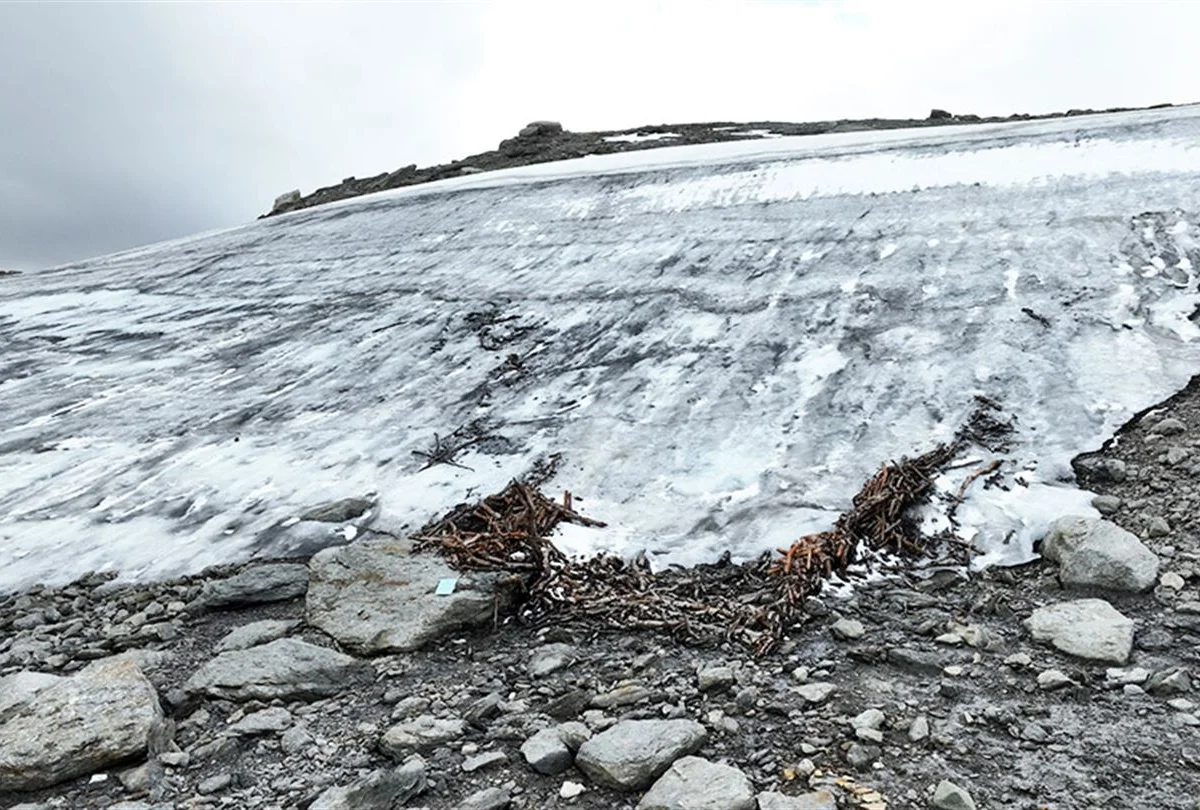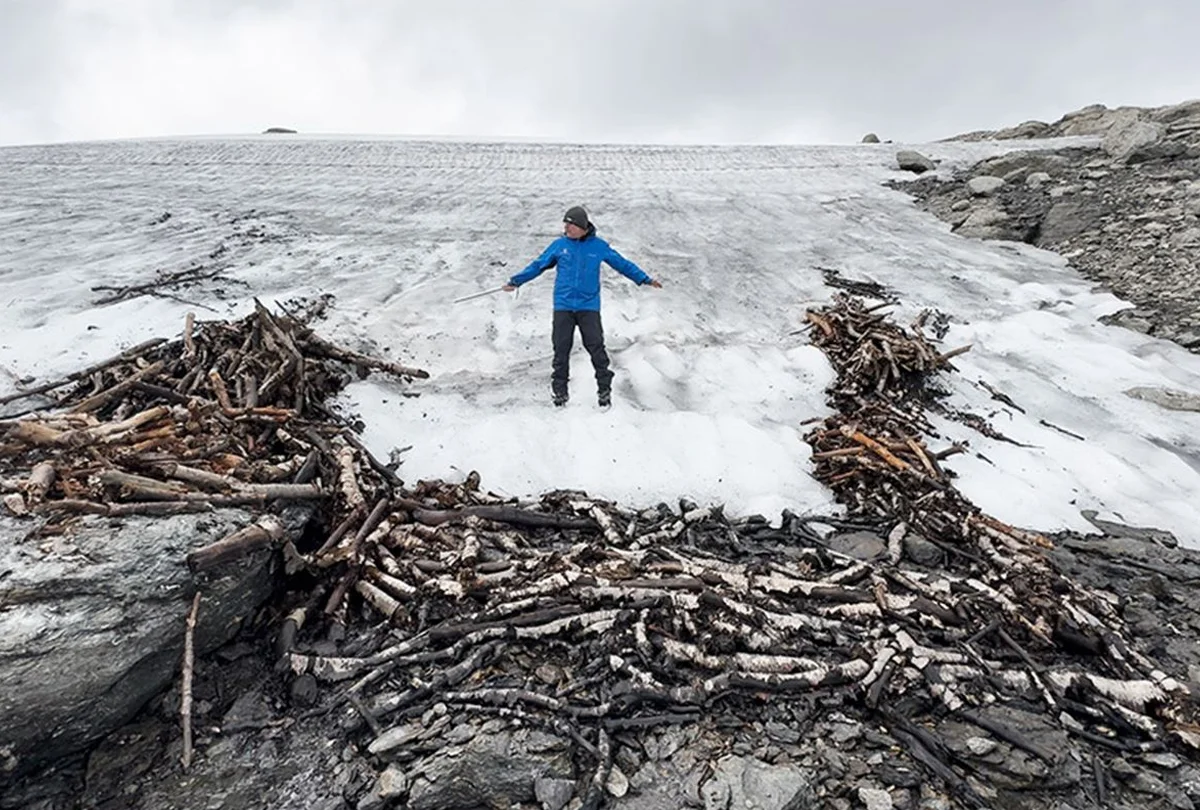On the Aurlandsfjellet mountain plateau in Vestland county, Norway, archaeologists from Vestland County Council and the University Museum in Bergen have uncovered a 1,500-year-old reindeer trapping system.
The discovery, already being hailed as one of the most extraordinary archaeological finds for 2025, consists of hundreds of meticulously hewn wooden logs that remained preserved under layers of snow and ice for centuries.
The best-preserved section are two wooden fences leading into a large pen constructed from heavy logs, where Reindeer were herded to be killed. According to archaeologist Øystein Skår of Vestland County Council, this is the first wooden mass-capture structure ever uncovered from ice in Norway.
“This finding makes us certain that the facility was used for mass hunting. All antlers have markings, which gives us deeper insight into the hunting activity itself,” said Skår.
Archaeologists also discovered a cache of well-preserved reindeer antlers, many bearing distinctive cut marks that reveal how the animals were processed after capture. “These markings confirm beyond doubt that this was a site for mass hunting,” Skår added.
Scattered around the site were iron spearheads, arrow shafts, and bow fragments, all associated with reindeer hunting. Among the artifacts were finely carved wooden objects and ornamented vessels, as well as an antler brooch likely lost by one of the trappers.
All recovered materials are now being carefully stabilised at the University Museum’s conservation department in Bergen. The wooden elements must dry slowly over time, while the iron artefacts are undergoing treatment to prevent corrosion. The area has since been placed under protection through the Cultural Heritage Act.
“The problem going forward is that things disappear because people take objects with them. In addition, all the wood will quickly weather away if the ice disappears more,” says Skår, who hopes the find is so special that parts of it will be exhibited at the museum in the future.
Header Image Credit : Thomas Bruen Olsen, University Museum, UiB
Sources : Vestland County Municipality







